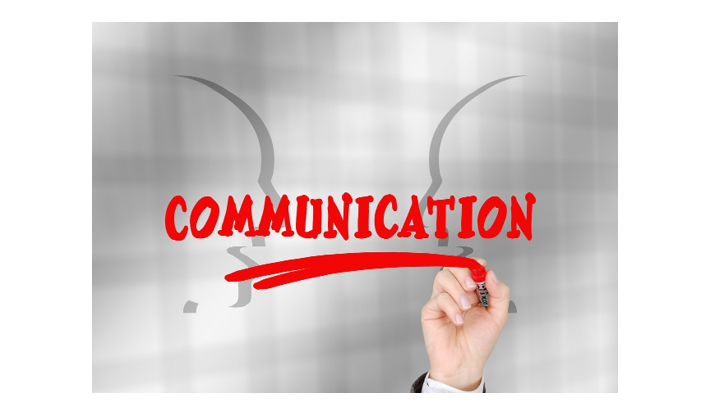Let me shatter a common myth: communication is not just about information. It’s about action.
In my chats with managers, a pattern emerges. Ask them, “What’s the purpose of this communication?” and 80% will say, “We just want to inform.”
Hold up. Informing isn’t the finish line; it’s the starting point. Is the information driving outcomes? Every message must serve a purpose: to inspire, guide, or prompt the recipient toward a clear and measurable action.
Without engagement, your communication is like a car engine revving in neutral—it makes noise but goes nowhere. And when your audience is left guessing what’s next, you open the floodgates to misunderstandings, rumors, or worse, apathy.
The Unseen Cost of Missed Action
Imagine this email brief given by the CEO to the communications leader:
Subject Line: We’ve launched a new product!
Message Body: We’re thrilled to announce the launch of our latest product! Designed with innovative features, this new offering strengthens our ability to serve customers better and seize new opportunities.
Let’s make the most of this milestone together—here’s to driving success!
Exciting? Sure. But what’s the call to action here? What do you expect the reader to do? Buy it? Promote it? Clap politely? Without clarity, your message becomes a lost opportunity. Without specific guidance, the message’s impact remains unrealised.
As communications leaders it is our responsibility to turn the mirror on to the CEO and ensure there is clear action for the people reading it.
Why is it Important to Address this Gap?
Passive communication—updates that inform without directing—is a common issue in corporate environments. It often results in the following:
- Misalignment: Teams operate without clear guidance, leading to inefficiencies.
- Missed Opportunities: Stakeholders overlook key initiatives due to a lack of urgency or specificity.
- Reduced Engagement: Messages that lack purpose fail to hold the audience’s attention.
By focusing on actionable communication, organisations can ensure that every message contributes to strategic objectives.
How to Make a Message Work: Insights from Behavioral Science
Our brains are wired to respond to stimuli. Communication isn’t just words; it’s a psychological nudge. Our actions stem from layers of context—from the microsecond decisions of our amygdala to the deliberate reasoning of our prefrontal cortex. Human actions are influenced by two key systems:
- Immediate Responses: Triggered by emotional stimuli, these responses are rapid but short-lived.
- Deliberate Reasoning: Driven by logic, these decisions require clarity and context.
Strategic communication activates both. Emotional resonance captures attention, while clear, actionable guidance ensures follow-through. Together, they create a framework for engagement that leads to tangible results.
Does your communication trigger instinct (the “act now” gut reaction) and purpose to engage reason (the “this makes sense” moment)?
Practical Strategies for Communication Leaders
As a corporate communications leader, your role is pivotal in shaping how messages drive business results. Consider the following strategies:
- Align Communication with Business Objectives
Every piece of communication should tie back to a broader business goal. Whether the goal is to increase sales, improve employee engagement, or enhance customer experience, ensure that messaging reflects this alignment. - Leverage Behavioral Insights
Incorporate principles of behavioral science to design messages that resonate. For instance, urgency motivates action, while clarity reduces decision fatigue. Use these tools to craft communications that guide recipients effortlessly toward desired outcomes. - Develop a Consistent Call-to-Action Framework
Standardise the use of actionable phrases across all channels. This ensures consistency and makes it easier for audiences to understand what is expected of them. - Invest in Analytics
Use data to assess the effectiveness of communication campaigns. Metrics such as click-through rates, response times, and conversion rates provide valuable insights into audience behavior. - Empower Teams with Training
Equip teams with the skills to create actionable communication. Workshops, templates, and guides can help standardise the best practices across the organisation.
The Business Case for Actionable Communication
Actionable communication is not a luxury; it is a competitive advantage. Organisations that excel in this area experience:
- Faster Decision-Making: Clear messaging reduces delays by eliminating uncertainty.
- Higher Engagement Rates: Purpose-driven communication captures and retains attention.
- Improved ROI on Initiatives: When recipients know what to do, they act, leading to better outcomes for campaigns and projects.
The Ripple Effect of Actionable Communication
When communication propels action, it creates ripples. Each action leads to another, building momentum. Informing alone is like tossing a pebble into a pond—it makes a splash but fizzles quickly. Actionable communication is a stone skipping across the water, leaving a trail of impact.
Wrap-Up
So, what’s the takeaway? Don’t just inform. Transform. Propel. Direct. Your message is more than just words; it’s an invitation to act, a challenge to change, and a catalyst for progress. Think of your next email, blog, or campaign not as a memo, but as a bridge, a guide rope, or even a rocket launcher.
Corporate communication must evolve from being purely informational to being decisively actionable. Each message represents an opportunity to drive business results, align stakeholders, and foster engagement.
For communication to be effective, it must serve a dual purpose: inform and guide. By embedding actionable insights into every message, you ensure that your organisation’s words lead to measurable, meaningful outcomes.
Ready to ignite action?
The views and opinions published here belong to the author and do not necessarily reflect the views and opinions of the publisher.



Be the first to comment on "Communication: The Engine of Action"